When the calendar says it’s the first day of spring, no one is fooled in the North Country. Those first, yellowish daffodil leaves at the edge of a melting snow bank? Best to ignore them. The next day those tender, hopeful shoots may be buried under a foot of snow.
Perhaps the best gauge of spring’s true arrival is mud season, when gravel roads lose their frost and turn gelatinous and nearly impassable. New Hampshire has a wonderful 24-year tradition called the “mud season breakfast,” hosted by the University of New Hampshire Cooperative Extension Coös County office in Lancaster. This annual rite of spring offers respite and camaraderie to a diverse group of winter-weary foresters, loggers, biologists, and other natural resource professionals who gather to enjoy one another’s company and discuss issues, all while commiserating over many cups of coffee about how they can’t get back out in the woods fast enough.
At the conclusion of one recent breakfast, we were released into a sun-drenched afternoon – the kind that gives one pause at the idea of being trapped in a car for a two-hour ride. I decided work could live without me for an afternoon, and followed my inner compass up Route 3, across the Connecticut River, and into Vermont’s Nulhegan Basin. This was the place where, as a young forester, I conducted my very first timber harvest some 25 years ago.
The sinuous stretch of road between the villages of Bloomfield and Island Pond, Vermont, was part of my daily commute as an operations forester for Champion International Corporation. If you’ve never been to the area, it’s mostly woods; with the exception of a scattering of modest residences along the road, the entire area north of Route 105 is uninhabited. Unlike most of New England, this land was never cleared for farming. For centuries, its vast forests of high-quality spruce, fir, and northern hardwoods have been managed as a wood supply for New England and points beyond.
In order to find the Nulhegan, you have to know where to look. There is no dramatic natural feature that entices a person to pull over, no spectacular waterfall, mountain peak, or granite monolith commanding you to stop and absorb a breath-taking view. The Nulhegan Basin, at least on its front doorstep, is more subtle than that. There are only a few vantage points along the road where you can look across a flat expanse, roughly 12 miles in diameter, that’s covered in a blanket of balsam fir, red spruce, and a lesser mix of aspen, birch, and red maple. Distinct hardwood ridges hem the expanse, defining a geological “basin” that’s suspected to be an ancient volcanic crater formed by a major eruption that subsequently collapsed into its circular form. Beneath the tree canopy are myriad wetlands and streams. The place has a rich logging history and roads with names like the Peanut Dam, Stone Dam, Tin Shack, and Eagle’s Nest. The name Nulhegan – a Native American word used to describe a place that’s difficult to navigate because of log traps and deadfalls – is a nod to an even earlier history. The word remains apt, as the forest is dominated by short-lived balsam fir that blow over easily after they reach 60 to 80 years of age.
Logging Legacy
In 1984, Champion purchased approximately 132,000 acres of land in Essex County, Vermont, and another 190,000 acres in northern New Hampshire from the St. Regis Paper Company. At the turn of the twentieth century, most of these same lands were owned by the Connecticut Valley Lumber Company, a logging empire started by George Van Dyke, the river driving timber baron chronicled in Robert Pike’s classic Tall Trees, Tough Men. Champion’s Vermont holdings stretched from the town of Averill near the Canadian border south to Granby.
The Nulhegan Basin constituted about half of the company’s property in the state, and contains a network of rivers that allowed for driving logs to the Connecticut River. The red spruce and balsam fir were prized for their fiber; the pulp ended up at Champion’s mill in Deferiet, New York.
When I arrived in the late 1980s, much of the mature balsam fir had been recently devastated by the spruce budworm. Still, significant stands of spruce (ironically, the softwood species more resistant to the budworm) remained, and the company focused on harvesting those stands while they were healthy and economically mature.
Fresh out of forestry school, with a new hardhat, pickup truck, and toolbox full of marking paint, I was assigned to my first logging job, alongside the access road of the Vermont Electric Transmission Company’s powerline. That’s the line that brings power from Hydro-Quebec to U.S. consumers. Champion enjoyed a right-of-way on the Powerline Road, which ran north-south along the eastern ridge of the basin, providing convenient access to some of the best-quality northern hardwoods in the region.
My second operation was on Lewis Pond Road, on the west side of the basin. Both jobs were in Lewis, one of several townships owned entirely by Champion. Lewis was a forester’s dream – 40 square miles of forests, wetlands, streams, rivers, and no residents (human anyway), except during deer season, when the lights came on in dozens of camps scattered throughout the town.
Life with The Woodsmen
Recognizing my youth, the company assigned me to monitor operations conducted by two of the most congenial and cooperative loggers any tenderfoot forester could have wished for – Paul Tessier, owner of Tree Chop from Columbia, New Hampshire, and brothers Roland and Leander Audet, otherwise known as The Woodsmen, from Coaticook, Quebec.
Paul was relatively new to large-scale logging, having been a small timber-stand-improvement contractor previously. He was eager to please, inquisitive, and wanted to earn the company’s business.
Already two months into his contract on Lewis Pond Road when I arrived, Tree Chop was conducting a clearcut of mostly red spruce with a crew of five chainsaw operators (mechanized feller bunchers were not yet widely used). There had been a fair amount of rain that summer, and despite brushing in their trails as much as possible, water was pooling like chocolate milk in their tire ruts. Luckily, the terrain was flat and there were no brooks nearby being threatened by sedimentation. Still, being new to the business of logging, the appearance of so much mud had me concerned. Quick to see the worry in my face, both Paul and Brendan Prusik, the company forester assigned to “break me in,” allayed my fears, “The mud’s not moving anywhere. This is a temporary situation once the weather turns. And besides, look at all the frogs; they’re loving it!” they offered half-jokingly. Unexplainably, there were frogs leaping in some of the rut pools. I was skeptical and suspect of their light-hearted prediction, but sure enough, later that summer, the trails and the site healed over, much to my relief. My real world learning curve had begun: logging is a disruptive process by its very nature, and understanding the difference between temporary and long-term impacts of a harvest, and knowing when to intervene, would only come with experience.
Roland and Leander were more seasoned loggers. Roland was the ambassador, with a ready smile and wry observations; he loved to show off veneer logs he had cut, or how he had managed to climb a steep ridge by winching his skidder up to the top. Leander was gregarious like his brother, also proud, but less inclined to talk about his work.
With so much to learn, I showed up on The Woodsmen’s job nearly every day for two weeks. One day, while having lunch with one of the cutters, I learned that Leander was growing weary of my daily visits, announcing, “If that Champion forester shows up on my job one more time, I’m going to build him his own trailer and he can stay the night!”
Whether by premonition or coincidence, the necessity to spend the night did occur before that season was over. One late winter afternoon, the front tire of my pickup caught the soft shoulder of a logging road and my truck was sucked into the ditch. I quickly dropped it in reverse and gave it some gas, only to hear the sound of the left rear tire chain cutting into an ice sheet. The other rear tire spun futilely, burrowing deeper into the soft snow. With darkness descending, and the last log trucks gone for the day, I climbed out over the snow bank to ponder my options. In the distance, I could hear Roland’s log loader and slasher on the Black Branch. It was a crystal clear sky, so with moon and stars lighting the way, I walked the two miles to the log yard to ask Roland if he would pull me out. Roland said, “OK, I’ll pull you out but you stay with me tonight at camp. I’ll fix you dinner.”
The Woodsmen’s camp was custom-built on a trailer bed, a steel-sided structure with a low peaked roof and a few windows. It had all the comforts of home, with a small kitchen, sitting area, gas heater, and two bunks. I recall the pungent aroma of chainsaw exhaust mixed with balsam pitch, which emanated from the wool clothes hung near the door. Roland prepared a couple of fat steaks and asked what I like to drink, pointing to the nice selection of liquor he had stored over the sink. We enjoyed dinner together, and after a few gin and tonics, were settling in nicely for the evening.
Sometime just before midnight a knock came on the door, and the party was over. I’d forgotten that, because we worked in such a remote area, every forester was required to call in his plans each morning and check back in again after returning from the wilderness. Now Brendan Prusik was at the door, informing me that the company staff had mobilized, complete with radio command center and emergency crews standing by, to begin my rescue operation.
Shaping the Future
When I worked in the Nulhegan Basin, it was one of the best sites for balsam fir and red spruce in the region. In parts of the basin, it was common to find mature fir sporting two or three 16-foot logs that were clear and sound. Some of the red spruce, and to a limited extent the white spruce, could also grow to substantial size and quality. We were contacted by log cabin builders looking for long clear logs and by specialty violin makers seeking the fine-grained “fiddle-butt” spruce for its acoustical properties.
Budworm salvage harvesting in the late seventies left large swaths of the basin thick with newly regenerated fir and spruce saplings. Due to my interest in softwood silviculture and Champion’s need for softwood fiber, I was directed to identify areas that would benefit from the investment of pre-commercial thinning. The program took off and several hundred acres were treated in the basin.
One of the most gratifying sights for any forester is the new growth in a forest thinned many years earlier. In returning to the site, I was pleased to see that the crop trees in those stands have tripled in diameter. As these trees move into larger sizes, they will increase in both timber value and habitat value. Some now support the state-endangered spruce grouse. Other changes were heartening, as well. The clearcut on the Lewis Pond Road is now a thick wall of spruce and fir trees nearly 20 feet in height. And those formerly muddy trails are now just narrow grassy pathways.
Today, the Nulhegan contains 12,000 acres of critical white-tailed deer wintering habitat. More than 60 years ago, a full third of Essex County’s deer wintered here. But by the mid-1980s, the spruce budworm epidemic and subsequent heavy harvesting had taken a toll on the deer yards, and the deer. State biologists were requesting harvesting limits until a long-range management plan could be developed. Champion agreed to discontinue cutting and collaborate in the planning process.
The initial planning group was dubbed the Nulhegan Deer Wintering Area (NDWA) management team and consisted of Champion forester Paul Mulcahey, Champion wildlife biologist Will Staats, Vermont Fish & Wildlife Department biologists Cedric Alexander and Charlie Willey, and Vermont Forest, Parks and Recreation forester Dave Willard. Company staff changes over time would see new participants, including Champion foresters Brendan Prusik, Jeff Meserve, Bud Delano, and Tim Woods.
At the outset, the NDWA management team seemed destined for conflict, with Champion focused on harvesting and the state wanting to protect the last remnants of their largest deer wintering area. I had been transferred to Champion’s New Hampshire District but I kept in contact with my colleagues who were deeply engaged in the discussions. The process took nearly four years, and involved sometimes tense meetings, but eventually, with patience, trust, and compromise, both sides reached some common goals. The objectives were relatively straight forward: to achieve 50 percent cover (5,505 acres) by the year 2035; to provide for deer mobility to all treatment units within the NDWA; to increase the spruce-fir component in non-shelter stands; and to achieve a sustainable annual harvest of softwood. The resulting Nulhegan Deer Wintering Area Management plan (NDWA) agreement was formalized in 1994 and represented a positive demonstration to the general public that habitat management can be compatible with commercial timber harvesting.
An Era Ends
My days with Champion ended in 1992, and within five short years after my departure, the company announced it would sell its Vermont holdings. This was a seismic shift that forever altered the dynamics of the North Country. For generations, the Champion lands had provided residents with forest management jobs, and land that supported hunting, fishing, trapping, and snowmobiling. Despite the criticism often leveled at large corporate landowners, many in the area did not want to see it replaced with a large presence of public land and the strings that come attached.
When the political dust finally settled, The National Fish & Wildlife Service purchased 26,000 acres of the basin, which became a division of the Silvio O. Conte National Wildlife Refuge; the state acquired an adjacent 22,000 acres to form the West Mountain Wildlife Management Area; and the remaining 84,000 acres of Champion’s Vermont holdings was purchased by a private timberland investor and managed under a conservation easement held by the Vermont Land Trust. Despite the ownership diversity, or maybe because of it, a balance of habitat protection, traditional uses, and timber management was maintained.
Today, the Nulhegan Basin is marked by a large sign along Route 105 that announces the Silvio O. Conte National Wildlife Refuge. The refuge headquarters, a newly built red building that resembles a farmhouse, is on the former site of the Bear Mountain Motel, which had served more as a honky-tonk for locals with cabin fever than as a place to stay. The recently paved parking lot, cement curbing, and manicured grounds are in stark contrast to my memory of the simple gravel entrance to the motel.
Basin Refuge Manager Mark Maghini told me that a breeding pair of Canada lynx was recently confirmed on the property. A robust snowshoe hare population is also supported by the young trees that provide cover and food. And there are many ongoing habitat enhancement projects, including efforts by Trout Unlimited and the Vermont Fish and Wildlife Department to restore log traps and deadfalls for brook trout habitat.
Although Mark was aware of the NDWA deer/timber management plan, the refuge management mission is understandably different now, and timber harvesting is only done when a specific habitat feature will benefit.
Wood still flows from the land outside the refuge, but at much more infrequent, modest amounts than during the Champion heydays. The number of forest-related jobs in the area is down dramatically over the past two decades. Aging mill technology, including at the Berlin and Groveton, New Hampshire, paper mills, and inexpensive labor in other countries have forced the closure of many of the region’s paper mills, sawmills, and furniture plants.
On the bright side, Burgess BioPower recently constructed a modern wood energy plant on the site of the former Fraser Paper mill in Berlin, New Hampshire. That new facility became operational this past winter and is expected to consume about 750,000 tons of wood annually. But it will employ only about 40 people, whereas the former paper mill employed hundreds. Still, the new wood market is welcomed by area landowners and the forest industry workers who now have a new market to supply. The Ethan Allen plant in Beecher Falls, Vermont, which closed in 2009 and put 238 people out of work, re-opened a few years ago, but it, too, supports less than half the jobs it once did.
The Nulhegan Basin and the surrounding former Champion lands represent a microcosm of the changes that have swept across the Northern Forest Region over the past 20 years, from the Adirondacks to Downeast, Maine. Large changes in land ownership affect land uses, which ultimately affect the welfare of area residents, both human and animal. Some changes are welcome, like the return of the lynx and enhanced habitat for other species; some are regretted, like the loss of good-paying industry jobs and local control of private land. Change is inevitable, of course, and it’s always worth allowing that inner compass to take you back to see how your actions played a positive role in shaping the future.


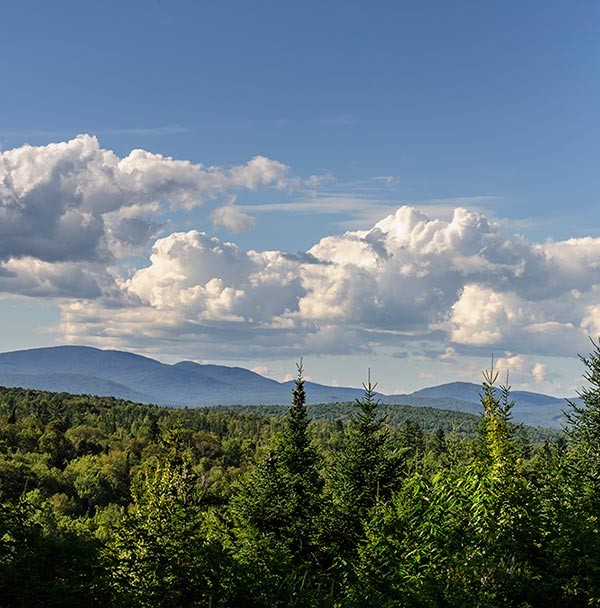
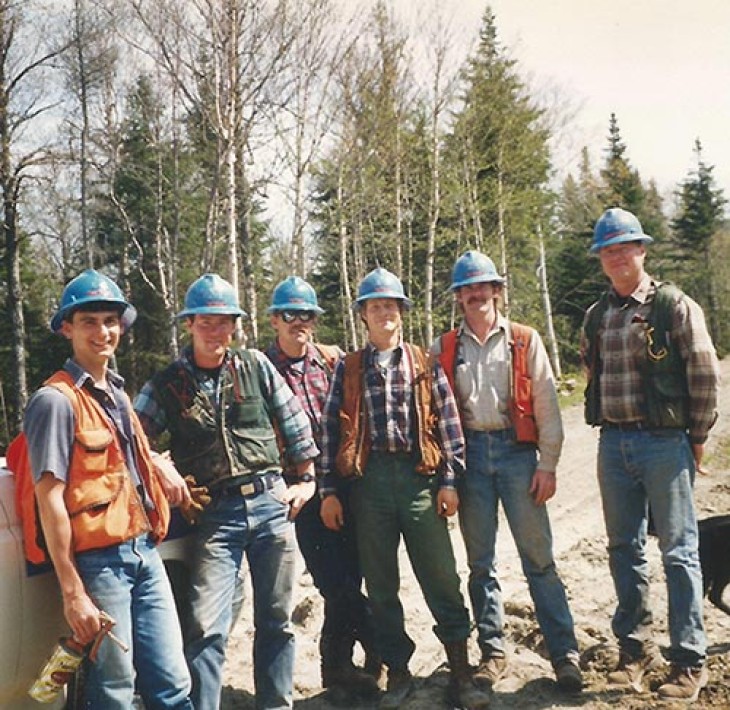
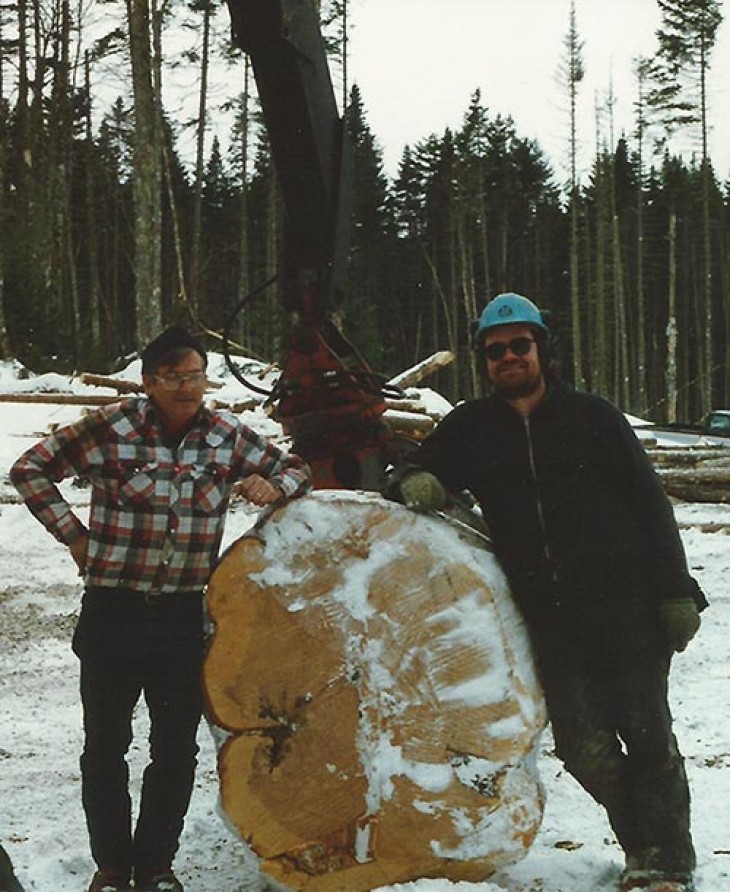
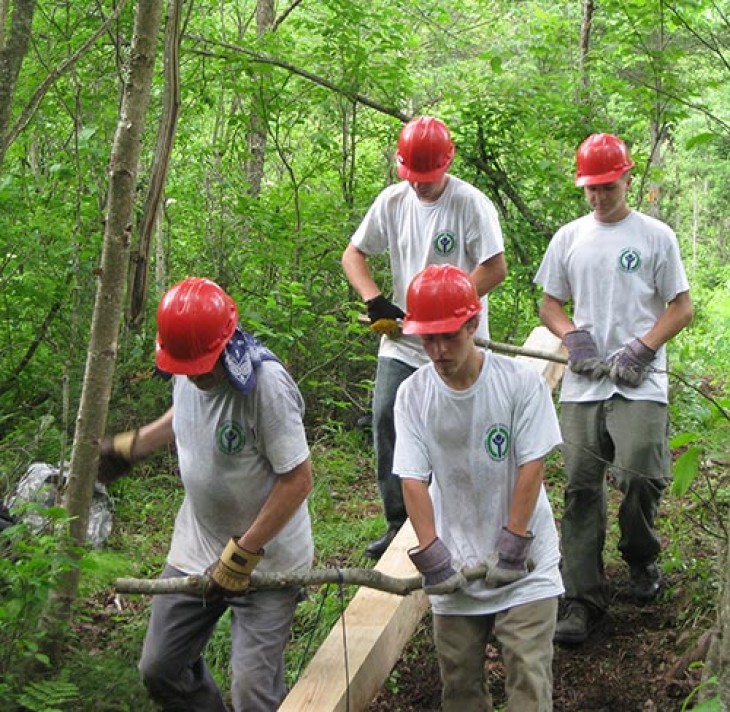
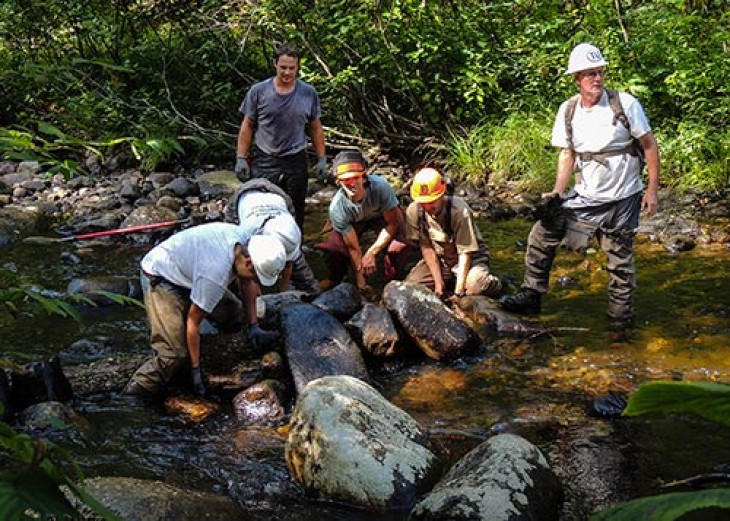
Discussion *